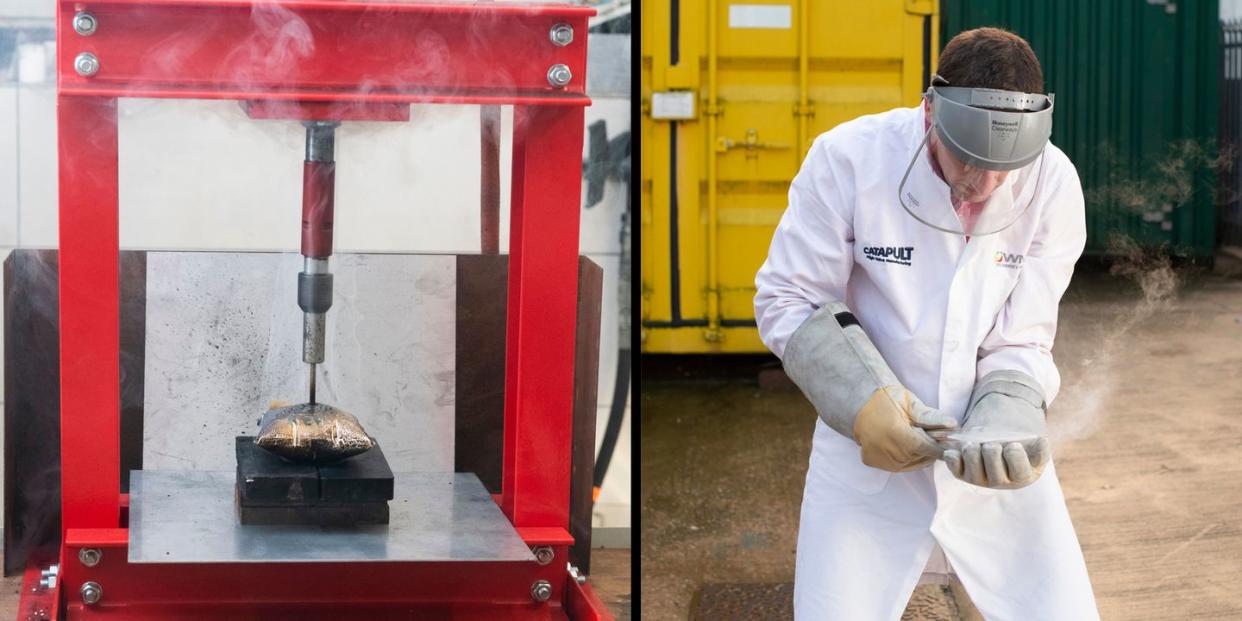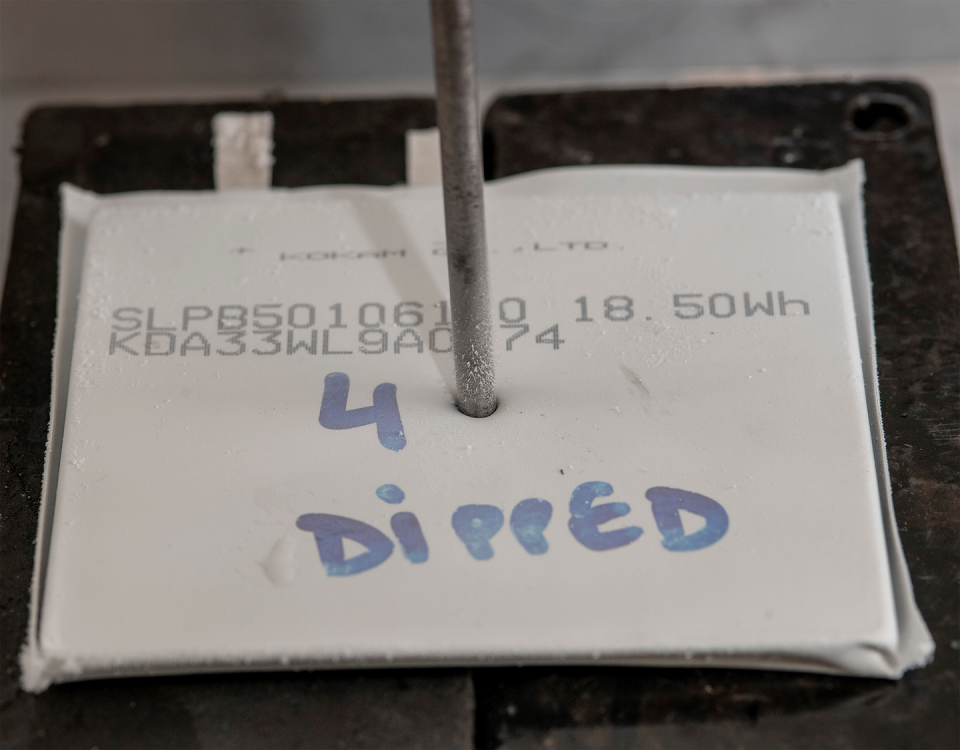What Happens When You Cryogenically Freeze a Car Battery

Scientists have cryogenically frozen lithium-ion batteries to make them safer to transport.
Additional research into foldable and incombustible lithium-ion batteries may also bring increased safety and reduced volatility.
Freezing functional batteries did not reduce their capacity in the long run.
You probably know batteries last longer in the freezer, but freezing could also make car batteries safer to transport, scientists say. Shipping damaged batteries like those that power electric vehicles is really dangerous, requiring a costly explosion-proof box to contain any volatility caused by stress or temperature. But by dousing batteries in liquid nitrogen, scientists found they could reduce a battery's volatility to zero and ship them in batches in refrigerated trucks instead of in individual $11,000 "explosion" boxes.
Lithium-ion batteries power everything from Teslas to smartphones, and historically these batteries have turned explosive under duress. That could be manufacturer oversight, as in the case of knockoff smartphone or Apple batteries sold on Amazon and elsewhere, or just an anticipated result if a good battery is damaged in a crash or some other kind of incident. Every lithium-ion battery is a potential bomb because its insides are packed with flammable stuff. Like the leaky, damaged dynamite on Lost, a damaged lithium-ion battery must be handled with extreme care and can still, uh, halt and catch fire.
Scientists published their findings in the Journal of Energy Storage. They took intact lithium-ion batteries, cycled them (the term for fully expending and recharging any chargeable battery, like the one in your laptop or phone) a set number of times, then cryogenically froze some in order to measure how freezing affected the batteries.

Not only was there “very little variation between the energy capacities” of the frozen and never-frozen batteries, but the frozen ones also performed better later: “After approximately 600 cycles, the two groups appear to diverge, with the control group having lower average capacity than the cryogenically frozen one.”
It’s important to ship damaged batteries the safest possible way, but having the option to freeze new and undamaged batteries could make shipping safer and cheaper. A shipment of flammable batteries is only as safe as what’s happening around it. If batteries can be frozen to neutralize their volatility during transit, they can be transported more easily and cheaply, and then thawed at their destinations before being installed in a car or laptop. Testing batteries before and after freezing is a way to prove it’s worth exploring as a practical solution.

For damaged batteries, shipping them requires special permission and compliance with a complex preparation regime. Cryogenic freezing seems elaborate compared with regular mail or cargo shipping, where things are just stacked in room-temperature boxes, but it’s potentially far simpler than getting pre-approved by following a dozen steps, submitting a U.N. safety report, and emailing (yes, this is real) dangerousgoods@UPS.com.
Research is continuing to make lithium-ion batteries safer to operate, too. In October, scientists announced a new prototype of a lithium-ion battery that’s flexible and incombustible, eliminating in one fell swoop two of the biggest safety complaints about these batteries. To be clear, this is true flexibility as designed and tested by engineers—not the involuntarily swelling that busts Apple batteries out of their docks, which is still happening after a dozen years of new devices.
You Might Also Like

